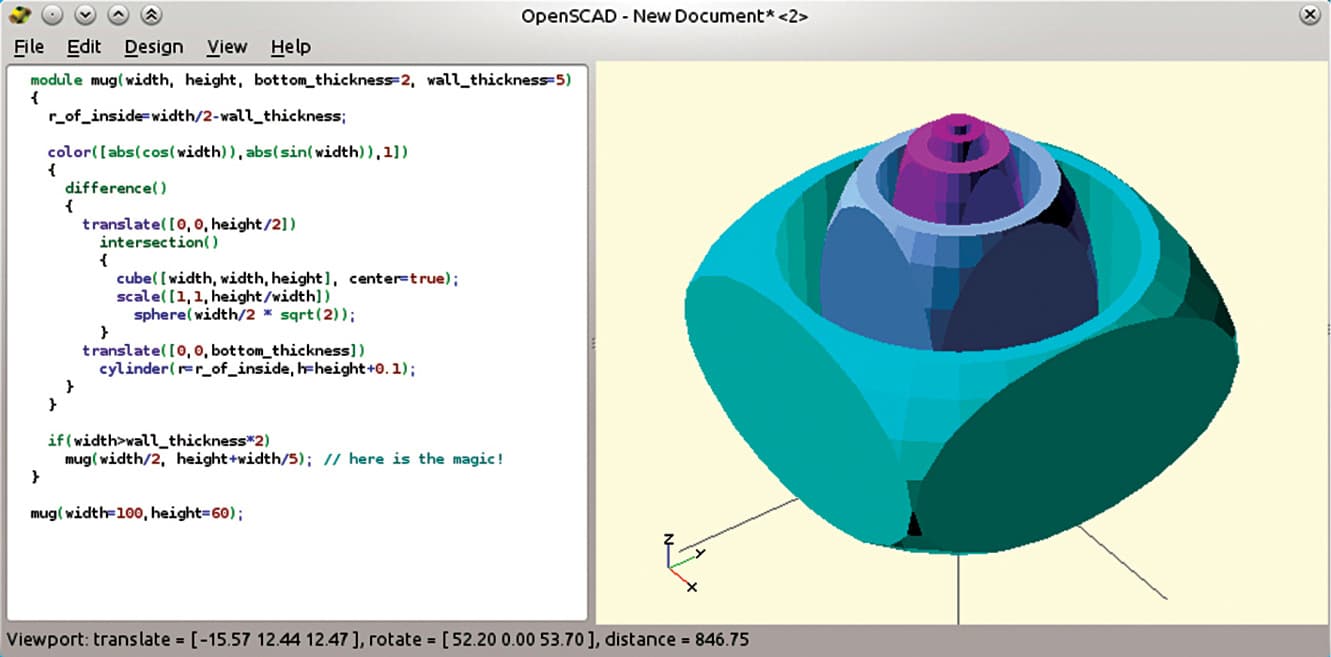
Multiple output files are not supported, so using this option you cannot also obtain the model that would have normally been generated.įor 2013.05+, the option to output a. echo causes openscad to produce a text file containing error messages and the output of all echo() calls in filename as they would appear in the console window visible in the GUI. If the option -d is given in addition to an export command, all files accessed while building the mesh are written in the argument of -d in the syntax of a Makefile.įor at least 2015.03-2+, specifying the extension. Some versions use -s/-d/-o to determine the output file format instead check with "openscad -help". When called with the -o option, OpenSCAD does not start the GUI, but executes the given file and exports to the output_file in a format depending on the extension (. The usage on OpenSCAD version 2011.09.30 (now deprecated) was: [ -camera=translatex,y,z,rotx,y,z,dist | \ check-parameter-ranges arg =true/false, configure the parameter range check check-parameters arg =true/false, configure the parameter check for q quiet mode (don't print anything *except* m arg make_cmd -runs make_cmd file if file is missing d arg deps_file -generate a dependency file for make Solarized | Tomorrow | Tomorrow 2 | Tomorrow Starnight | BeforeDawn | Nature | DeepOcean |

colorscheme arg =colorscheme: *Cornfield | Metallic | Sunset | csglimit arg =n -stop rendering at n CSG elements when projection arg =(o)rtho or (p)erspective when exporting png view arg =view options: axes | crosshairs | edges |
OPENSCAD LOFT FULL
render arg for full geometry evaluation when exporting png imgsize arg =width,height of exported png autocenter adjust camera to look at object's center camera arg camera parameters when exporting png: info print information about the build process Off, amf, 3mf, csg, dxf, svg, png, echo, ast, GUI, the file extension specifies the type: stl, o arg output specified file instead of running the OpenSCAD can not only be used as a GUI, but also handles command line arguments.

To make the promised rounded box, take the hull() over four cylinders, one located at each of four edges. Hull() takes any number of objects and builds their convex hull the action is like wrapping cling film tightly around the shapes and solidifying the result.

If you’ve never really understood hull() before, this is a great place to start. I’ve even seen people make rounding tools and difference them out of the model.įor me, the most intuitive method is to place the four cylinders that would be the box’s round edges, and connect them all together with hull(). Another method, that renders a lot faster, is to draw a 2D square, offset() it with rounded edges, and extrude this upwards. One is to draw a 3D box and minkowski() around it with an appropriate cylinder. There are multiple ways to make a rounded box. If you use OpenSCAD and your creations end up with hard edges, or you spend too much time figuring out angles, or if you just want to experience another way to get the job done, read on! And with a little ingenuity, hull() can provide a nearly complete modelling strategy all on its own. Hull() solves a number of newbie problems: making things round and connecting things together. Hull() does just what it says on the can - creates a convex hull around the objects that are passed to it as children - but that turns out to be invaluable. What’s your favorite OpenSCAD command? Perhaps it’s intersection() or difference()? Or are you a polygon() and extrude() modeler? For me, the most useful, and maybe most often overlooked, function is hull().


 0 kommentar(er)
0 kommentar(er)
